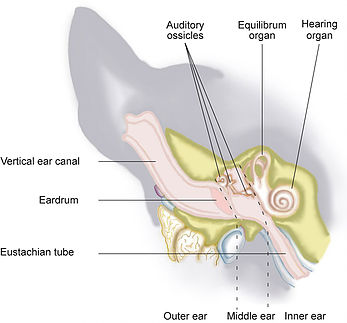The vestibular system is a combination of sensing receptors in the middle ear which help us determine our orientation and movement. These receptors then send signals via nerves to parts of the brain that help us maintain balance and coordinate our movements. If any part of this intricate system is disrupted it can result in “vestibular disease”.
Symptoms of vestibular disease include: head tilt, ataxia or uncoordinated movements, walking in circles, falling over, motion sickness or nausea, and nystagmus (rapid eye movements side to side or rotational).
Causes of Vestibular Disease
- Middle ear infections can affect the vestibular organs which reside in the ear. Diagnosis can occasionally be made by external ear exam and microscopic evaluation of debris, but may require x rays of the bulla (bones of the inner ear). Treatment will involve topical and/or oral antibiotics. In severe cases, anesthesia for a deep ear flush may be warranted.
- Brain lesions such as cancer, bleeding or blood clots in or around the brain can be an important but less likely cause of vestibular symptoms. Diagnosis of this would require referral for CT scan or MRI.
- Idiopathic or “old dog vestibular disease” is the most common cause. Idiopathic disease has no known cause, but it occurs acutely and resolves quickly. Often dogs with this form will be back to normal in 7-14 days. Treatment involves treating for motion sickness and nausea. Physical therapy can also be helpful in assisting in recovery.

